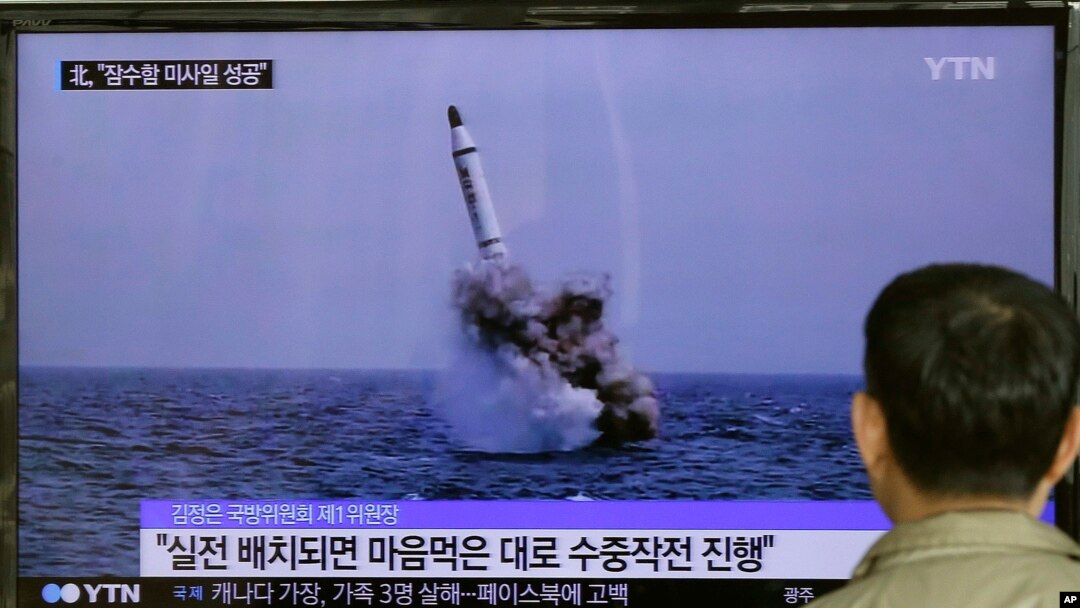U.S. experts say North Korea is still a long way from possessing an operational ballistic missile submarine despite the North’s claim that it has successfully test-fired a ballistic missile from a submarine.
On Saturday, the North’s official Korean Central News Agency (KCNA) said “it was verified and confirmed that the underwater ballistic missile launch from a strategic submarine fully achieved the latest military, scientific and technical requirements” through the test.
Joseph Bermudez, a chief analytical officer at AllSource Analysis, told VOA's Korean service that he does not see the North Korean move as an imminent threat.
“Right now, they have an experimental submarine to test a ballistic missile. That is a long way from an operational submarine with full ballistic missile capabilities,” he said. “This is an emerging threat. It’s still going to take years for this to become an actual threat."
Bermudez said South Korea’s defense capabilities against the North Korean threat seemed to be adequate.
“At this point, defenses that South Korea is deploying in cooperation with the United States and its allies in the region appeared to be sufficient to defend against the North Korean threat. Should the North Korean threat develop more, then those forces need to be adjusted,” explained Bermudez.
Bruce Bennett, a defense analyst at the Rand Corporation, said what North Korea achieved from the test launch remained unclear.
“I haven’t seen any description of what exactly happened to the missile after it left the water,” Bennett said.
Bennett also questioned if the communist country has a submarine that is capable of firing a missile with a range to reach beyond the Korean peninsula.
However, Bennett did stress that the missile launch poses a threat to South Korea and Japan.
“If you can fire two or three missiles at South Korea or Japan, that’s relatively a significant capability, and would require new efforts for defense against it,” Bennett said.
Bruce Klingner, senior analyst at the Heritage Foundation, warned that North Korea’s missile capability might have been significantly underestimated.
“The missile may have only traveled a few hundred yards, but the purpose of it was to test the ejection from a submarine underwater as opposed to a long-range test flight. So it appears it was successful, and I think it’s coming earlier than some analysts expected,” said Klingner.
In Seoul, South Korean President Park Geun-hye called the North Korean move a “serious challenge” to stability on the Korean peninsula and in East Asia. Park vowed firm response to any provocation by the North.
The U.S. State Department called on North Korea to “refrain from actions that further raise tensions in the region and to focus instead on taking concrete steps to fulfilling its international commitments and obligations.”


